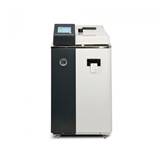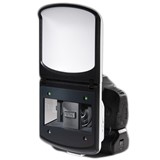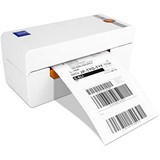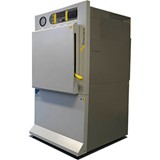Key takeaways
- Cost ranges: Large industrial autoclaves (≥ 1,000 L) typically cost between $120,000 and $750,000, depending on size, configuration, and features.
- Mid-size autoclaves (200–1,000 L) generally cost $33,000 to $132,000, while small models (50–200 L) range from $8,000 to $33,000.
- Class distinctions:
- Class B: High-performance, full pre-vacuum, suitable for hospitals and labs.
- Class S: Intermediate capability, single-stage pre-vacuum, moderately versatile.
- Class N: Basic gravity displacement, suitable only for solid, unwrapped items.
- Total ownership cost: Factor in more than just purchase price, ongoing expenses like consumables, maintenance, servicing, training, and energy efficiency play a big role in long-term value.
- Compliance in Australia: Ensure the autoclave meets TGA, WorkSafe, and relevant ISO certifications for safety and quality assurance.
- Typical warranties: Standard coverage is 12 months, with many suppliers offering extended warranties and maintenance contracts.
- Financing options: Leasing and staged payment plans are available for large-scale equipment, often via specialised suppliers or financing partners.
- Common mistakes to avoid: Don’t underestimate capacity, ignore compliance requirements, select purely on price, overlook ongoing costs (consumables, energy, maintenance), or neglect site infrastructure.
- Installation & site requirements: Ensure your site can accommodate the autoclave’s size, weight, power, water, ventilation, and drainage needs.
Introduction
Investing in a large autoclave is a major decision for hospitals, laboratories, medical clinics, food manufacturers, and other industries requiring reliable sterilisation. With prices reaching hundreds of thousands of dollars and compliance requirements to consider, choosing the right machine requires a careful understanding of types, pricing, operation, maintenance, parts, warranties, and supplier support.
This guide is designed to give Australian buyers a comprehensive overview to make a well-informed, future-proof decision.
Types of large autoclaves
By capacity
- Small industrial (50–200 L): Typically $8,000–$33,000.
- Mid-size (200–1,000 L): Typically $33,000–$132,000.
- Large (≥ 1,000 L): Typically $132,000–$750,000+.
By sterilisation class
- Class B: Highest performance, uses fractionated pre-vacuum technology, ideal for sterilising wrapped, hollow, and complex instruments.
- Class S: Moderate performance, suitable for a mix of solid and some hollow items, but less versatile than Class B.
- Class N: Basic level, uses gravity displacement; designed for unwrapped, solid items only.
By configuration
- Horizontal bench or floor models: Best for spaces where the unit can sit along walls or benches.
- Vertical or pass-through models: Optimise floor space and are common in high-volume labs or hospitals where sterility zoning is required.
Pricing overview
Pricing varies based on size, functionality, automation, material quality, and certifications.
- Small autoclaves (50–200 L): $8,000–$33,000.
- Mid-size autoclaves (200–1,000 L): $33,000–$132,000.
- Large autoclaves (≥ 1,000 L): $132,000–$750,000+.
- Bench-top models: Entry-level autoclaves start from around $2,500, while advanced touchscreen models are around $10,000–$20,000.
- High-capacity hospital/lab units: Through-wall systems and fully automated units can exceed $120,000 and reach up to $800,000 for custom-built systems.
Operations and maintenance
Operational considerations
- Cycle options: Modern units offer pre-vacuum, sterilisation, drying, and programmable cycles.
- Automation: Touchscreens, programmable settings, and remote monitoring reduce operator errors and improve efficiency.
- Load types: Match the machine to your operational needs, e.g. hollow instruments, wrapped items, or bulky loads.
Maintenance requirements
- Routine servicing: Regular calibration and pressure testing ensure compliance and extend lifespan.
- Emergency support: Choose suppliers who provide fast-response servicing to minimise downtime.
- Consumables: Factor in the ongoing need for test packs, sterilisation pouches, distilled water, and indicator tapes.
- Parts replacement: Keep track of commonly replaced parts such as valves, gaskets, and temperature sensors, choose suppliers with local stock availability.
Parts, consumables, and accessories
Regular consumables and accessories are a significant part of ongoing operational costs. Examples include:
- Bowie-Dick test packs: Approximately $55 per pack.
- Helix test kits: Around $100–$120 for 100 pieces.
- Sterilisation pouches: Average $7–$15 per pack, depending on size.
- Distilled water: Roughly $9–$12 for a 5L container.
- Indicator tapes: Around $10–$20 per roll.
Accessories like trays, racks, and logbooks for compliance documentation may also be required.
Financing and warranties
Warranties
- Standard coverage: Most suppliers provide 12-month warranties.
- Extended plans: Optional extended warranties and annual servicing packages are available for large-scale investments.
- Service contracts: Recommended for high-capacity autoclaves to ensure ongoing compliance and minimise unexpected breakdowns.
Financing options
- Leasing: Suitable for high-cost autoclaves exceeding $100,000, allowing businesses to preserve cash flow.
- Payment plans: Some suppliers offer staged payments, spreading costs over several months or years.
- Quote comparison: Use platforms and supplier networks to obtain multiple competitive quotes before committing.
Compliance and certifications in Australia
When purchasing a large autoclave in Australia, compliance is non-negotiable. Key requirements include:
- TGA approval: Ensures medical-grade autoclaves meet the Therapeutic Goods Administration’s regulations.
- WorkSafe standards: Ensures safe installation, operation, and handling in workplace environments.
- ISO certifications: ISO 9001 and related quality management standards provide additional assurance.
- Validation documentation: Choose suppliers that provide certificates of conformity and validation reports for compliance audits.
Installation and site requirements
Before purchasing a large autoclave, ensure your site is fully prepared to accommodate it. Key considerations include:
- Space and layout: Allow room for the autoclave, loading/unloading, and service access. Large units may require 2–4 m² of clear floor space.
- Floor strength: Autoclaves can weigh 300–2,000+ kg. Verify the floor can safely support the weight.
- Power supply: Small/mid autoclaves may run on 240V single-phase, while large industrial models often require 415V three-phase.
- Water supply: Check for direct plumbing access or refillable reservoir requirements. Distilled water may be needed.
- Ventilation and drainage: Ensure proper airflow to dissipate heat and provide floor drains for condensate discharge if required.
- Access for installation: Verify doors, corridors, and lifts can accommodate the unit’s size during delivery.
Common pitfalls to avoid
Buying a large autoclave is a significant investment. Avoid these common mistakes:
- Underestimating capacity: Selecting a unit too small leads to overuse, increased maintenance, and shorter lifespan.
- Ignoring compliance: TGA, WorkSafe, and ISO approvals are essential; unapproved machines can create regulatory issues.
- Choosing solely on price: Low-cost imports may lack local service, spare parts, and compliance.
- Overlooking ongoing costs: Consumables, energy, and maintenance can add thousands annually if not budgeted.
- Neglecting infrastructure: Failing to check power, water, ventilation, and floor requirements can delay installation or cause costly modifications.
Key buying considerations
When selecting a large autoclave, evaluate the following factors carefully:
- Capacity requirements: Consider current and future sterilisation needs.
- Sterilisation class: Class B for maximum versatility, Class S for moderate needs, and Class N for basic loads only.
- Total cost of ownership: Include purchase price, installation, energy use, maintenance, and consumables.
- Supplier support: Prioritise suppliers offering installation, training, emergency support, and ongoing maintenance services.
- Compliance: Ensure the machine and supplier meet all relevant Australian safety and quality regulations.
- Consumable costs: Estimate monthly expenses for pouches, test packs, indicator tapes, and distilled water.
- Financing options: Investigate leasing or staged payment plans if purchasing outright isn’t viable.
Frequently asked questions (FAQs)
Q1. What size autoclave should I choose?
Select based on your daily workload and instrument sizes. For high-volume facilities, a ≥1,000 L autoclave is ideal, while labs often use 200–1,000 L units.
Q2. Which sterilisation class do I need?
- Choose Class B if you need maximum versatility for hollow and wrapped instruments.
- Class S works for moderate needs.
- Class N suits solid, unwrapped items only.
Q3. How much does it cost to operate a large autoclave?
Operating costs include electricity, distilled water, calibration, maintenance, and consumables. Energy-efficient units have higher upfront costs but lower long-term expenses.
Q4. What warranty should I expect?
A standard 12-month warranty is common. For large investments, consider extended warranties and annual servicing plans.
Q5. How long does delivery and installation take?
Smaller autoclaves may ship within weeks, while custom-built or large-capacity units can take several months. Always confirm timelines with suppliers before purchase.
Q6. Do I need compliance certificates?
Yes. Ensure your supplier provides TGA, WorkSafe, and ISO documentation, along with calibration and validation reports to meet Australian regulations.
Conclusion
Purchasing a large autoclave is a significant investment, but with the right approach, you can select a machine that meets your capacity, compliance, and budget needs. By considering factors like total cost of ownership, financing options, warranty coverage, and supplier support, you’ll make a well-informed choice that supports your organisation’s long-term operational success.



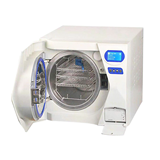





-160x160-state_article-rel-cat.png)
